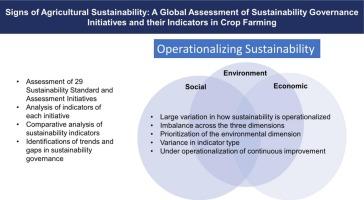Agricultural sustainability has become a cornerstone priority for researchers worldwide. Recent comparative studies have illuminated the intricate relationships between agronomic practices and economic viability across farming systems. The evaluation of sustainability metrics provides profound insights into how different approaches impact both environmental stewardship and fiscal outcomes.
Several European nations have pioneered comprehensive frameworks for measuring agricultural sustainability. Austria, Estonia, Belgium, and Czechia display exceptional performance across multiple sustainability indicators. Their success stems from deliberate policy implementations that optimize resource allocation while maintaining ecological balance. The metrics utilized encompass three fundamental dimensions – economic viability, social responsibility, environmental protection – creating a holistic assessment methodology that captures farming’s multifaceted nature.
Water efficiency calculations represent a crucial aspect of sustainability measurement. Researchers employ sophisticated analytical techniques to determine optimal usage patterns, sometimes resulting in unexpected discoveries about irrigation timing. These findings often contradict traditional assumptions about water requirements during specific growth stages, which farmers have begun incorporating into their management protocols despite initial hesitation.
The area dedicated to organic farming practices strongly influences sustainability ratings across different regions. Nations with elevated organic acreage typically demonstrate enhanced biodiversity markers, although this correlation occasionally presents exceptions in regions with distinctive geographical features. Environmental impact assessments frequently monitor ammonia emissions and pesticide utilization as vital indicators of agricultural sustainability. These chemicals, when deployed excessively, create persistent ecological disruptions that diminish long-term productivity potential.
Data-driven analysis has transformed how sustainability gets measured. Modern techniques integrate satellite imagery, sensor networks, and machine learning algorithms to deliver comprehensive sustainability assessments. The mathematical expressions determining water use efficiency have been refined continuously, offering more nuanced understanding of resource allocation. Farmers increasingly depend on these calculations when making pivotal decisions regarding crop selection and rotation schedules.
Labor productivity represents another defining metric within sustainability frameworks. Countries maintaining balanced worker-to-output ratios typically achieve higher overall sustainability scores. Nevertheless, some regions with modest labor productivity excel in environmental dimensions, challenging the assumption that economic efficiency must always correspond with ecological performance. This apparent contradiction highlights the complex interplay between different sustainability components.
Stakeholders throughout the agricultural sector have embraced sustainability metrics for varied purposes. Individual farmers utilize these measurements to enhance operational efficiency, while regulatory bodies depend on them for policy formation. The quantitative foundation these metrics provide enables objective comparison across diverse farming operations despite their fundamental differences in scale and approach.
Sustainability indicators help incorporate specialized agricultural knowledge into decision-making processes and measure advancement toward sustainable development goals. The integration of these metrics into planning has accelerated rapidly since early 2023, with widespread adoption expected across major agricultural regions by late 2025. Ecological, economic, and social aspects form the foundation for most comprehensive sustainability frameworks, though the specific indicators vary significantly between implementation models.
A cross-sectoral perspective when assessing sustainability performance reveals intriguing patterns. Studies examining fruit and vegetable farms in Ecuador demonstrated that sustainability metrics must be adapted to local conditions for maximum relevance. The transferability of metrics between regions requires careful consideration of geographical and cultural contexts, something that standardized frameworks sometimes overlook to their detriment.
The European Union’s member states show considerable variation in agricultural sustainability levels. Researchers classified countries into four distinct groups based on synthetic measurement approaches that integrate multiple indicators. This classification system helps identify specific areas requiring attention in particular countries, allowing targeted interventions that address unique challenges rather than applying uniform solutions across dissimilar agricultural landscapes.
The path toward enhanced agricultural sustainability remains challenging yet essential. Through continued refinement of measurement methodologies and expanded implementation of data-driven decision-making, the agricultural sector progresses toward practices that balance productivity with environmental stewardship. The insights developed through comparative analysis of sustainability metrics will undoubtedly shape agricultural policy and practice for generations to come.

